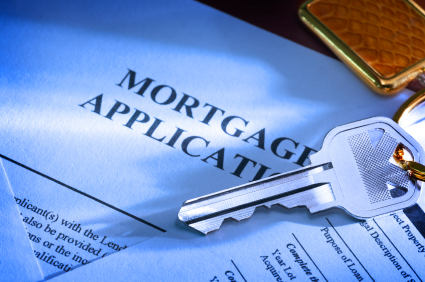 Refinancing a mortgage can help borrowers save money on their monthly mortgage payments. As so many American homeowners are payment-conscious, refinancing to a lower interest rate is a common practice – especially if interest rates are drastically lower than the rate that the loan originally carried. But refinancing isn’t always a good choice for everyone. And, even if one does decide to refinance their existing mortgage, there are certain types of refinance programs that may work better than others for the individual borrower. In today’s post, we’ll take a look at the FHA Streamline Refinance program and compare it to the traditional refinance alternative.
Refinancing a mortgage can help borrowers save money on their monthly mortgage payments. As so many American homeowners are payment-conscious, refinancing to a lower interest rate is a common practice – especially if interest rates are drastically lower than the rate that the loan originally carried. But refinancing isn’t always a good choice for everyone. And, even if one does decide to refinance their existing mortgage, there are certain types of refinance programs that may work better than others for the individual borrower. In today’s post, we’ll take a look at the FHA Streamline Refinance program and compare it to the traditional refinance alternative.
If you have a mortgage that is backed by the Federal Housing Administration (FHA), you may be eligible for the FHA Streamline Refinance. A fairly new program, the FHA Streamline allows borrowers with an FHA loan the opportunity to refinance in a quicker, more efficient manner than a typical refinance. Naturally, there are some pros and cons associated with this type of refinancing option. Here’s a quick rundown of the biggest benefits and drawbacks to an FHA Streamline Refinance:
Benefits to FHA Streamline Refinancing
- FHA Streamline Refis require significantly less documentation from applicants. There are no income verification requirements, no credit score verification requirements and no employment verification requirements.
- The FHA Streamline does not require a home appraisal. Instead, the FHA will let you use your original purchase price as your home’s current value, regardless of what your home is actually worth today. This is a huge draw for anyone who may be underwater in their mortgage, i.e. owing more on their loan than that home is currently worth.
- The FHA Streamline Refinance is offered in a wide selection of rate terms. Choose a fixed or adjustable rate, 15- or 30-year loan terms.
- There is no pre-payment penalty for FHA Streamline Refinance loans.
Drawbacks to??FHA Streamline Refinancing
- There is a limited scope of eligibility for the FHA Streamline program. FHA Streamline Refis are reserved only for borrowers with an existing FHA loan. Borrowers with loans that are owned or serviced by Fannie Mae or Freddie Mac are not eligible.
- You must have a perfect payment history for the last 12 months in order to qualify. Furthermore, the loan must be current at the time of closing. For borrowers who have been struggling to make their payments on time or at all will most likely be denied an FHA Streamline Refinance.
- The FHA will not allow borrowers to “bundle” the associated costs of a mortgage into the loan. The FHA Streamline Refinance will only work with the current principal balance plus the upfront mortgage insurance premium. Things like title charges, origination fees and other common costs must either be paid by the borrower at closing or by the loan officer. If the loan officer credits the charges, then the loan is known as a “Zero Cost FHA Streamline.” Although the name implies that the borrower will not have to pay any additional costs, what it actually means is that the borrower may not have to pay any closing costs up front. Usually, the loan officer will translate the credited costs into a higher interest rate; so really, you’re still paying the same fees, just over time instead of at closing.
When you look at the pros and cons associated with a FHA Streamline Refinance, you may find that it’s not the best option for your specific needs. If so, you may want to stick with the tried and true traditional refinance. Traditional refinancing works in essentially the same way the specialized FHA Streamline does; it can reduce your monthly mortgage payment by giving you a lower interest rate. However, traditional refinancing also has its own set of benefits and drawbacks. Let’s take a look:
Benefits of??Traditional Financing
- You may be able to qualify for a lower interest rate through a conventional refinance program than you would through the FHA Streamline. FHA Streamline refis sometimes carry higher interest rates because the borrower doesn’t have a lot of equity. If you have a lower loan-to-value ratio, you can most likely qualify for a lower interest rate through a conventional refi.
- Conventional refinancing can allow you to tap into your equity, if you have a good reason. If you’ve built up enough equity and you’re in need of some cash to fund something big (a home remodeling project, educational expenses, etc.) you can apply for what’s called a “Cash-Out Refinance.” Through the FHA Streamline, the idea is to help borrowers build equity, not take it out, so there would be no point in applying for an FHA Streamline if your goal is to consolidate debt.
- Mortgage insurance is only required up to the end of the first two years of a conventional loan. FHA loans require mortgage insurance throughout the life of the loan.
Drawbacks to??Traditional Financing
- Qualifying for a conventional refinance will require a lot more documentation than an FHA Streamline. Be prepared to show verification for employment and income as well as a good credit score if you want to secure a low interest rate.
- A conventional loan will also require a larger down payment than an FHA loan. The general requirement is 20 percent of the loan amount.
- With conventional loans, lenders have a little more leeway in determining origination costs and other fees. Through the FHA Streamline Refinance, lenders must set their fees to comply with the very precise cost regulations. This means that through the FHA refinance, you could pay significantly less in closing costs than you would with a traditional refinance.
The best thing to do when weighing two loan options is to speak with a reputable mortgage adviser or broker. We at the Decker Group are always glad to help our clients find the best refinancing program for their situation. Feel free to give us a call at (972) 591-3097 to learn more!














Comments are closed.